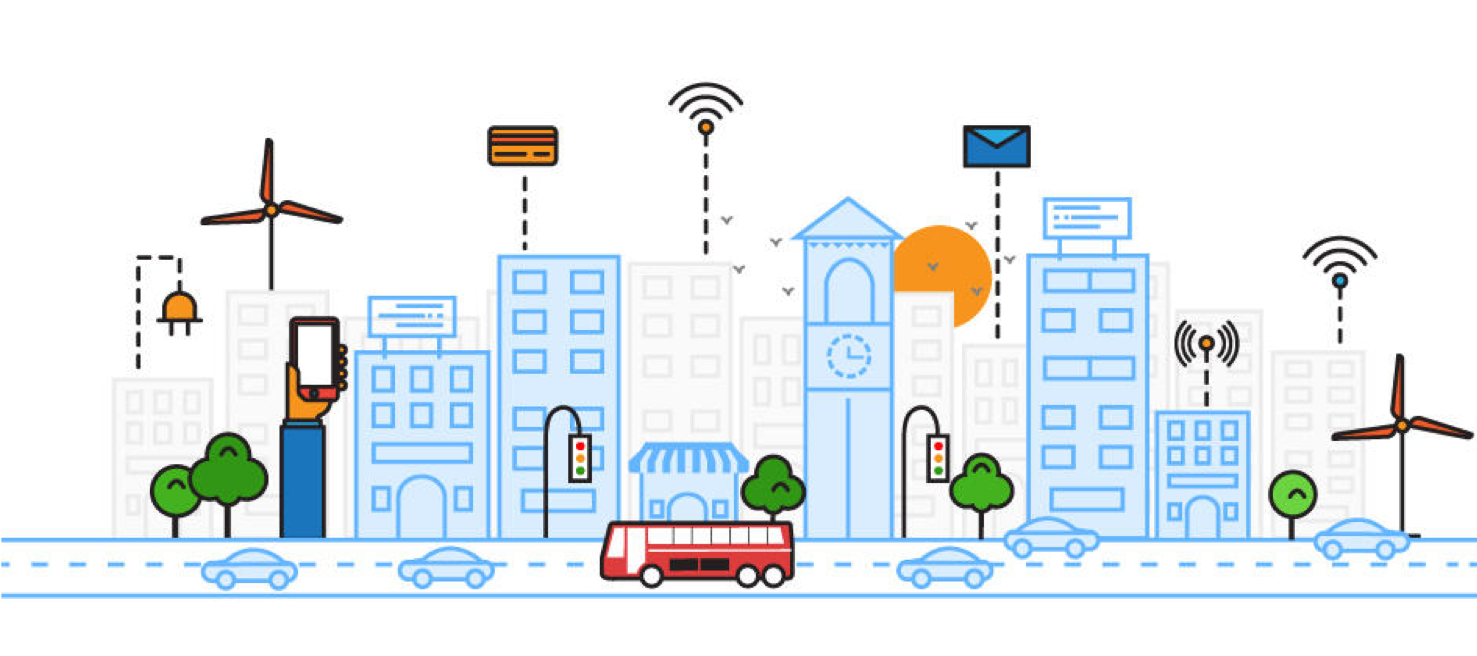What is a Smart City?
Everybody talks about it, but nobody really defines is…

Definition
A smart city leverages advanced technologies, data analytics, and interconnected systems to enhance urban living. It integrates digital solutions into infrastructure, transportation, energy, and public services to improve efficiency, sustainability, and quality of life. By utilizing IoT (Internet of Things), AI, and smart grids, smart cities optimize resources, reduce environmental impact, and provide seamless connectivity for residents and businesses.
How Should a Smart City Be Integrated?
A smart city should be built on a foundation of connectivity, sustainability, and innovation, integrating:
1. Smart Energy Solutions – Renewable energy sources, battery storage systems, and efficient power distribution to ensure sustainable electricity management.
2. Intelligent Transportation – EV charging stations, smart traffic management, and autonomous mobility solutions to reduce congestion and emissions.
3. Digital Infrastructure – 5G networks, AI-driven monitoring systems, and IoT sensors for real-time data collection and decision-making.
4. Sustainable Urban Planning – Eco-friendly buildings, green spaces, and waste management systems to promote environmental well-being.
5. Citizen Engagement – Digital platforms and AI-powered services to enhance communication, safety, and public participation in governance.
How We Support the Development of Smart Cities
We are engaged from the design stage to delivery, providing custom-tailored solutions that prioritize practicality, cost-effectiveness, and seamless integration. Our approach ensures that smart city projects are buildable and scalable, delivering long-term value to clients.
Our Smart City Solutions
1. IoT Platform & Real-Time Monitoring
• A unified IoT platform that monitors and controls all systems we provide, including client systems.
• A real-time dashboard for seamless data visualization and decision-making.
2. Wayfinding & Smart Navigation
• A comprehensive wayfinding strategy, covering both static and digital wayfinding solutions.
• 3D mapping, digital twins, and mobile app integration for an intuitive user experience.
• Interactive wayfinding kiosks powered by our CMS system for dynamic updates.
3. Smart Urban Infrastructure
• Smart parking solutions for optimized space utilization and traffic flow.
• Smart waste management with automated collection and monitoring.
• Asset and people tracking to enhance security, efficiency, and resource allocation.
• Integrated smart city solutions that connect all components into a single, intelligent ecosystem.
4. Customized Renewable Energy Solutions
• In partnership with leading technical experts, we provide customized renewable energy solutions, including:
• Smart lighting powered by renewable energy sources.
• EV charging stations designed for efficiency and sustainability.
By integrating these cutting-edge technologies into a cohesive smart city framework, we help governments, developers, and organizations build future-ready urban environments that are sustainable, efficient, and connected.
